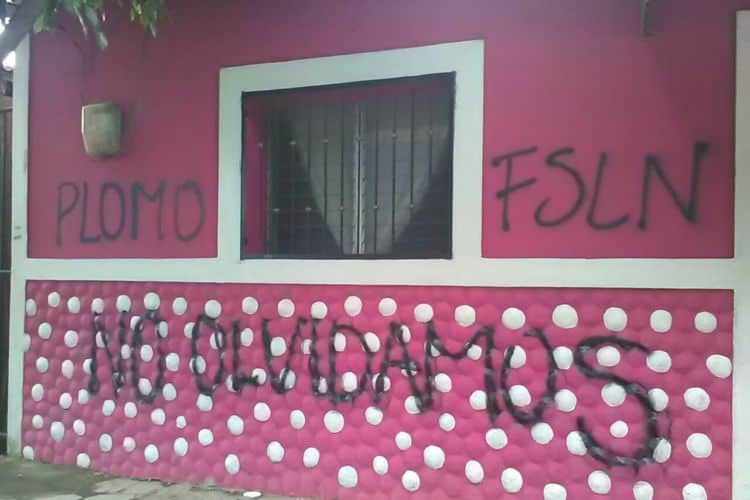Juan Carlos Arce, a lawyer for the Nicaraguan Center for Human Rights, (CENIDH), says social media sites are the most common vehicle to intimidate independent journalists during this period of government repression.
CENIDH has received several complaints and reports from journalists that have suffered attacks, defamation, and stigmatization.
Arce said that social networks are being used to “criminalize journalists,” with the goal of “immobilizing them,” and stop them from informing.
One of the journalists that faced threats through social media was the Matagalpa correspondent for Radio Corporación, Aurora Leyton. Leyton reported threats against her and her family to the CENIDH.
Orteguistas have also employed other forms of harassment and intimidation. On Tuesday morning, VS TV journalist Gerald Chávez, found his family home in Carazo spray painted with the message Plomo, FSLN, no olvidamos. Lead, FSLN, we don’t forget.
“I think it’s a way to intimidate me, intimidate my family, for the work I’ve been doing […] with regard to what’s going on in this country. I haven’t been lying, I’ve been publishing what people are feeling, what they’re living through,” Chávez said.
People on fake social media accounts have already threatened to burn down his house.
Fake social media accounts
Aurora Leyton said that fake social media accounts are naming people who are responsible for the violence in Matagalpa. They’ve included her name on the list.
They’ve also published photos of her family where they’re called “traitors” and they’re accused of locating and “defaming Sandinistas and public officials.”
The threats have forced Leyton to cancel her news show Mundo de Noticias, which was broadcast by a local radio station.
Read the original story in Spanish at La Prensa, first published on Aug. 15, 2018.
This story was translated into English and republished in The Tico Times as part of a partnership with La Prensa to help bring their coverage of the Nicaraguan crisis to an English-speaking audience.






